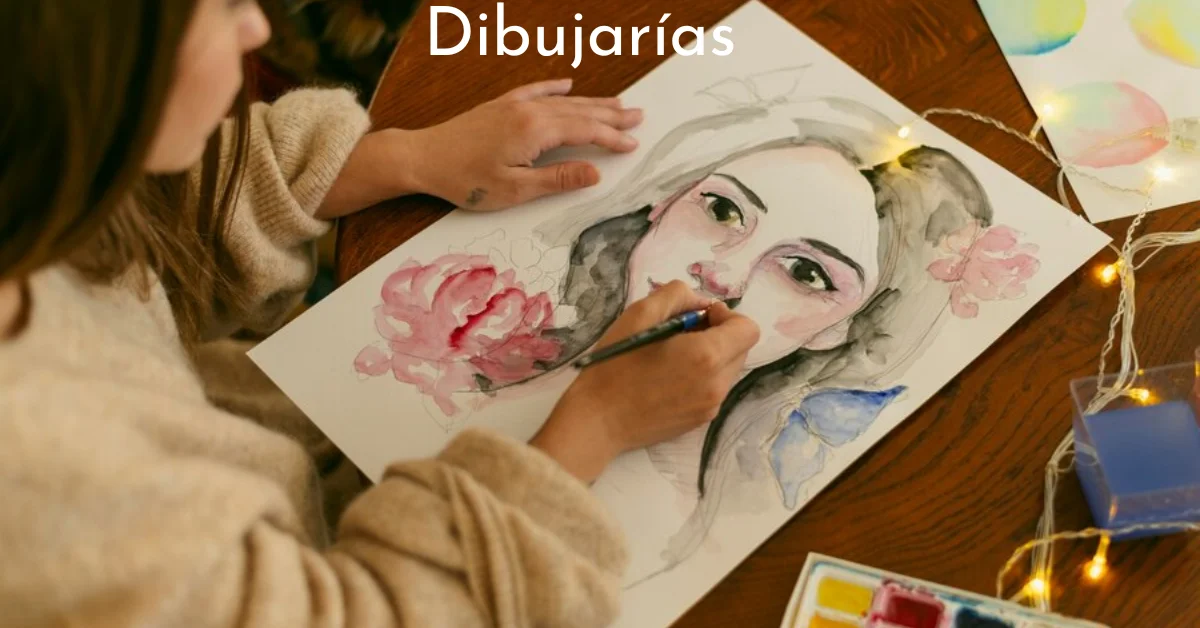Introduction
Drawing, or “dibujar” in Spanish, is a timeless art form that has evolved from primitive sketches on cave walls to intricate digital designs. The Spanish term “dibujarías” reflects the act of drawing, but it also invites us to delve into its cultural, historical, and artistic significance. This article explores the world of drawing, examining its development through the ages, its impact on culture, and its role in contemporary art.
The Evolution of Drawing
Drawing is one of the most fundamental forms of artistic expression. Its history spans thousands of years, with early examples found in ancient civilizations. Early humans used drawing as a means to communicate, record events, and express their understanding of the world. Cave paintings, such as those found in Lascaux and Altamira, provide evidence of how drawing was used to depict animals, hunting scenes, and spiritual symbols.
During the Renaissance, drawing became an essential tool for artists and architects. The era’s focus on humanism and naturalism led to significant advancements in drawing techniques. Artists like Leonardo da Vinci and Michelangelo used drawing to study anatomy, plan compositions, and develop their ideas before creating their final masterpieces. Drawing was not just a preliminary step but an integral part of the creative process.
In the 19th and 20th centuries, the role of drawing continued to evolve with the advent of new art movements. The Impressionists, for example, used quick, expressive sketches to capture fleeting moments and the effects of light. Meanwhile, the Surrealists and Abstract artists explored drawing as a way to express subconscious thoughts and break free from traditional forms.
Drawing as a Cultural Expression
Drawing is not just a technique; it is a form of cultural expression that reflects societal values, beliefs, and experiences. Different cultures have unique drawing traditions that offer insights into their histories and worldviews.
In many Indigenous cultures, drawing has been used to convey stories, spiritual beliefs, and social practices. Native American ledger art, for instance, utilizes drawing to record historical events and personal experiences. Similarly, Aboriginal Australian dot painting often incorporates symbolic drawings that represent Dreamtime stories and cultural connections.
In contrast, Western art has often emphasized drawing as a tool for artistic exploration and technical mastery. The focus has been on developing skills and techniques to represent reality accurately or to push the boundaries of artistic conventions.
The rise of manga and anime in Japan has introduced a new dimension to drawing as a cultural phenomenon. These art forms have gained global popularity, influencing fashion, entertainment, and visual storytelling. Manga artists, known for their distinctive styles and intricate line work, have become cultural icons, shaping the way stories are told and consumed.
The Role of Drawing in Contemporary Art
In contemporary art, drawing remains a vital and versatile medium. Artists use drawing to experiment with ideas, explore new concepts, and communicate complex emotions. The rise of digital technology has expanded the possibilities for drawing, allowing artists to create on tablets, computers, and other digital platforms.
One of the exciting developments in contemporary drawing is the fusion of traditional techniques with modern technology. Digital drawing tools offer artists a wide range of options for creating, manipulating, and sharing their work. Software programs like Adobe Photoshop and Procreate have become essential tools for many artists, providing them with the ability to work quickly and experiment with different styles.
Drawing has also found its place in street art and graffiti. Artists like Banksy and Shepard Fairey use drawing to make powerful political and social statements. Their work often combines traditional drawing techniques with bold, graphic styles, creating impactful visual commentary on contemporary issues.
Drawing as a Personal Practice
For many people, drawing is not just an artistic pursuit but a personal practice that offers numerous benefits. Drawing can be a form of meditation, a way to relax, and a method for improving focus and concentration. It allows individuals to express their thoughts, emotions, and experiences in a tangible form.
Drawing can also serve as a tool for personal growth and self-discovery. The act of creating drawings can help people understand their inner world, work through challenges, and gain insights into their own creative processes. For those who engage in drawing regularly, it can become a meaningful part of their daily routine, providing both joy and a sense of accomplishment.
Encouraging the Next Generation
Encouraging young people to engage in drawing is crucial for fostering creativity and artistic skills. Schools and community programs often offer art classes and workshops that introduce children and teenagers to the basics of drawing. These programs help develop technical skills, promote self-expression, and inspire a lifelong appreciation for the arts.
Parents and educators can support budding artists by providing them with the necessary tools and resources, such as sketchbooks, pencils, and access to art supplies. Encouraging experimentation and exploration without judgment allows young artists to develop their unique styles and interests.
Conclusion
The art of drawing, or “dibujarías,” has a rich history and a profound impact on culture and personal expression. From ancient cave paintings to modern digital creations, drawing has evolved as a means of communication, artistic exploration, and cultural reflection. Its significance extends beyond the canvas, influencing contemporary art, cultural practices, and personal well-being.
As we continue to explore and celebrate the art of drawing, it is essential to recognize its role in shaping our understanding of the world and our connection to others. Drawing remains a powerful and dynamic medium, offering endless possibilities for creativity and expression. Whether through traditional techniques or modern innovations, drawing continues to captivate and inspire, leaving an indelible mark on the world of art and beyond.

